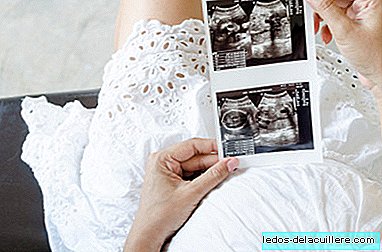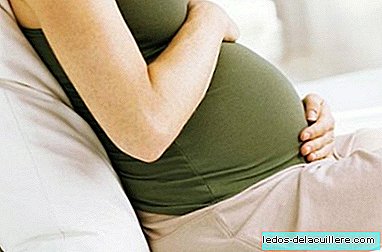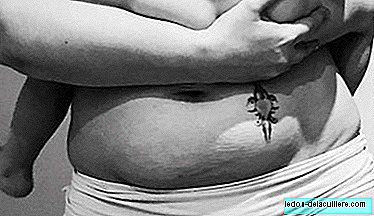
During pregnancy it may be the case that the baby grows less than normal. It is what is known as "delayed or restricted intrauterine growth" (CIR), which occurs in eight percent of pregnancies, often due to problems with the placenta.
The diagnosis of a CIR comes through an ultrasound and is a serious blow to the parents, as doubts and fears arise about the health and development of their child. Today we are going to know more about delayed intrauterine growth, why it occurs and what consequences it has for the baby.
What are your causes?
There are three possible causes for which delayed growth of the baby can occur inside the uterus:
On the one hand would be the causes of maternal origin, such as the consumption of tobacco, alcohol, certain medications and drugs during pregnancy, the mother's age (being under 16 or over 35), poor nutrition or certain diseases such as pregestational diabetes, preemclampsia or antiphospholipid syndrome.
On the other hand we would talk about placental causes, which refer to a malfunction of the placenta when transporting oxygen and food to the baby.
And finally there would also be the causes of fetal origin, such as genetic or chromosomal abnormalities, infections (toxoplasma, syphilis, rubella, cytomegalovirus, herpes simplex) and multiple gestations.
In addition, an increased risk of growth retardation has been associated in cases of women who already had a previous pregnancy with CIR. In this case, the odds seem to rise to 29 percent, compared to nine percent if the previous child is not CIR.
Placental causes are usually the most common, although in 40 percent of cases the specific cause is never known.Depending on the factors involved in this delay, the fetus may be symmetrically small or have a head of normal size for its gestational age, while the rest of its body is small. In this sense, three types of intrauterine growth retardation are described, of which we have already talked to you in detail a while ago.
How and when is it diagnosed?
Throughout the different controls that occur during pregnancy, the doctor can determine if the baby is growing normally inside the uterus. The main test to monitor this growth is ultrasound, which allows you to take a series of measures of the fetus to assess its weight.
Ultrasound also serves to determine the amount of amniotic fluid and the movements performed by the baby, because some babies with intrauterine growth retardation have a decrease in the amount of amniotic fluid and movements.
If the baby is detected to be small, ultrasound scans will be performed more frequently, and a Doppler ultrasound will have to be done as a complementary test in order to monitor fetal well-being at all times. But it is important to note that only one third of young babies have CIR.
According to the Spanish Society of Gynecology and Obstetrics (SEGO), a serious early delay It is usually detected at 27 weeks, but this affects only one percent of pregnancies. The rest, more moderate, is diagnosed from 32-34 weeks, on the ultrasound of the third trimester.
What to do before the diagnosis of CIR?
The diagnosis of delayed intrauterine growth does not necessarily have to be inevitably associated with the termination of pregnancy or the provocation of childbirth, as this should only be done when the risk of the baby remaining inside the uterus is greater than the risk of being born in a way early.
In cases of late CIR, the only thing that can be done is monitor it so that it does not cause any complications in the last stage of pregnancy, but in severe cases or in those in which problems in the placenta are detected, the delivery must be advanced.
The way to give birth to a baby with CIR will depend not only on its weeks of gestation but on its general condition, because in cases of very premature babies or with serious affectations of the placenta, a cesarean section will be chosen.Finally, it is worth mentioning that, as we can read in the CIR Acting Protocol of the Junta de Andalucía, to date, before a diagnosis of CIR there is nothing that the mother can do to improve the growth conditions of your baby in the womb. Measures such as bed rest, caloric increase, protein, and / or vitamin, or certain medication, seem to have been ineffective.
What is the subsequent development of a baby with CIR?

Once the baby with CIR is born, its development and evolution will depend on multiple factors, among which is the cause that produced the CIR, the time of pregnancy that occurred, and the post-natal nutrition you receive.
When comparing the development of a baby with CIR with another term born with the appropriate weight and size, they are observed certain significant differences in psychomotor development, as well as a greater predisposition to suffer diseases in adulthood such as diabetes, kidney problems or high blood pressure.
In any case, the primary care pediatrician will be the one who must monitor the growth and development of the CIR baby, paying special attention to its evolution in the first years of life.
Photos | iStock












